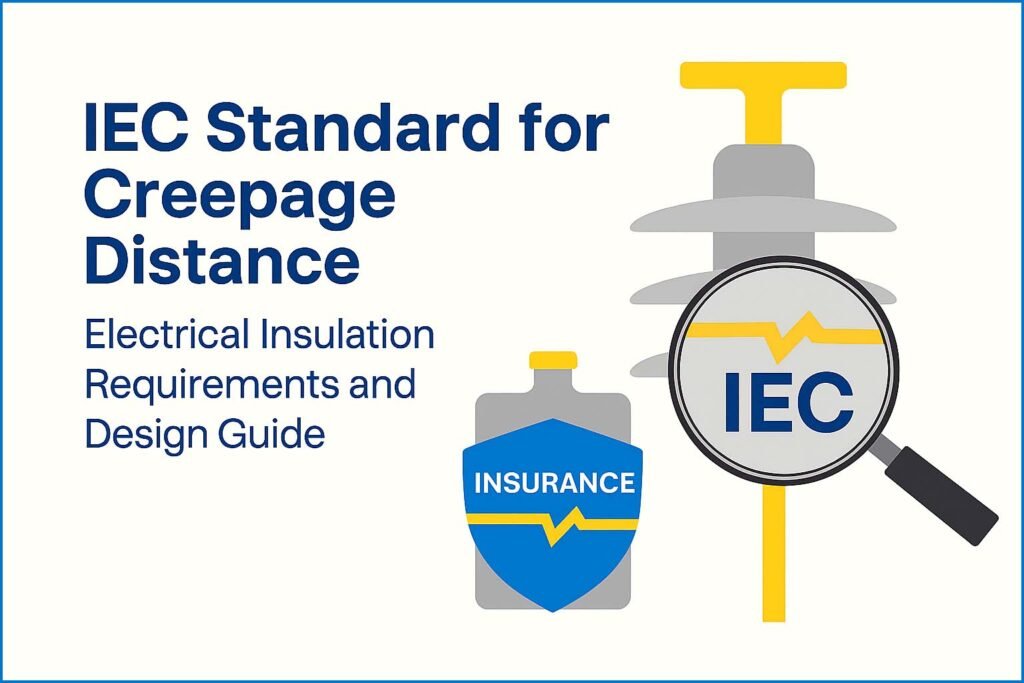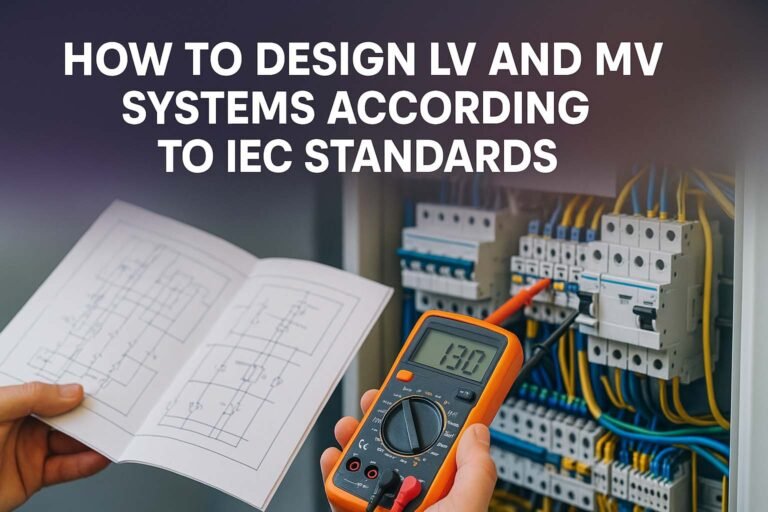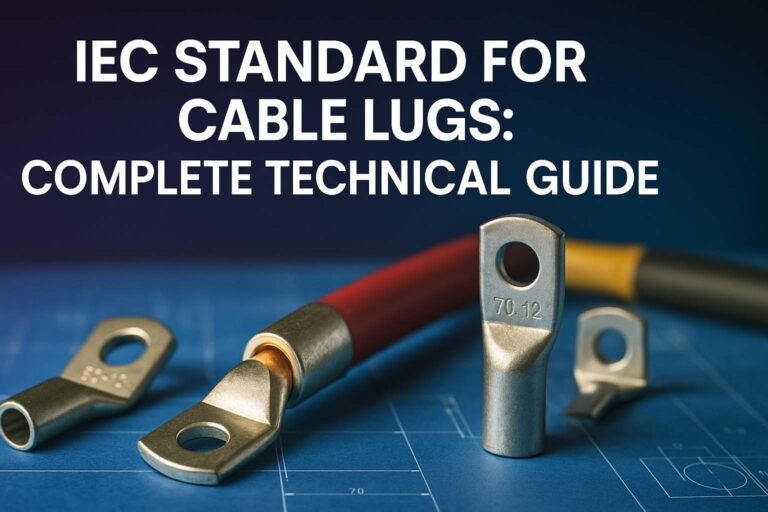IEC Standard for Creepage Distance – Electrical Insulation Requirements and Design Guide
The IEC standard for creepage distance defines how far electricity must travel across an insulating surface to avoid electrical breakdown. This concept may sound technical, but it plays a crucial role in ensuring electrical safety and reliability in power systems, transformers, switchgear, and printed circuit boards. Whether you are designing a solar inverter, a high-voltage device, or an industrial control system, understanding the IEC standard for creepage distance helps prevent flashovers, arcing, and insulation failures.

Table of Contents
What is Creepage Distance?
Creepage distance is the shortest path between two conductive parts, or between a conductive part and the equipment’s surface, measured along the surface of the insulation. This path determines how well the insulation can resist electrical breakdown caused by dust, moisture, or contamination.
The longer the creepage distance, the better the insulation’s resistance to surface discharge. In contrast, a shorter creepage path increases the risk of arcing, especially in high-humidity or polluted environments.
The IEC standard for creepage distance provides exact guidelines on how to calculate and maintain these distances depending on system voltage, pollution level, and insulation material.
Know more about IEC Standard for Cable High Voltage Test: Best Guide
Importance of IEC Standard for Creepage Distance
The IEC standard for creepage distance ensures that electrical devices remain safe and functional under real-world environmental and operational conditions. Without proper creepage distances, high voltage can track across insulation surfaces, leading to electrical faults, component damage, or even fire hazards.
Manufacturers follow these standards to achieve product certification, reduce the risk of insulation failure, and comply with safety requirements in global markets. Engineers use these values to design printed circuit boards (PCBs), transformers, and switchgear that can safely handle specified voltages.
Difference Between Creepage Distance and Clearance
Both creepage and clearance are vital for insulation design, but they refer to different paths:
| Parameter | Creepage Distance | Clearance Distance |
|---|---|---|
| Definition | Shortest path along the surface of the insulation | Shortest path through air between two conductive parts |
| Influenced by | Pollution, humidity, and surface condition | Voltage level and air pressure |
| Measured Along | Surface of insulating material | Straight line through air |
| Example | Tracking across PCB surface | Air gap between live parts |
The IEC standard for creepage distance focuses on surface insulation, while clearance deals with air insulation. Both must meet minimum requirements to avoid short circuits and dielectric breakdowns.
IEC Standards Governing Creepage Distance
Several IEC standards define creepage distance requirements, depending on the equipment type:
| IEC Standard | Application | Description |
|---|---|---|
| IEC 60664-1 | General insulation coordination | Defines creepage and clearance for low-voltage systems |
| IEC 60950 | IT and communication equipment | Specifies distances for safety in electronic devices |
| IEC 61010 | Measurement and control equipment | Sets insulation distances for laboratory instruments |
| IEC 60216 | Electrical insulation materials | Covers thermal endurance of insulating materials |
Among these, IEC 60664-1 is the most commonly used standard for determining creepage distances in general electrical and electronic systems.
Know more about IEC Standard for DC Cable Sizing – Complete Technical Guide
Factors Affecting Creepage Distance as per IEC Standard
The IEC standard for creepage distance depends on several critical parameters:
1. Working Voltage
Higher system voltage requires greater creepage distance. The standard defines rated insulation voltage levels that correspond to minimum creepage requirements.
2. Pollution Degree
Pollution degree describes how much dust, humidity, or contamination is expected in the operating environment.
| Pollution Degree | Typical Environment | Example |
|---|---|---|
| 1 | Clean, dry, controlled | Inside sealed electronic devices |
| 2 | Normally non-conductive pollution | Office, indoor use |
| 3 | Conductive pollution or condensation possible | Industrial or outdoor areas |
| 4 | Persistent conductive pollution | Chemical or marine environments |
3. Material Group
Insulation materials are divided into groups based on their Comparative Tracking Index (CTI), which measures resistance to tracking on the surface.
| Material Group | CTI (V) | Example Material |
|---|---|---|
| I | ≥ 600 | PTFE, PBT |
| II | 400–599 | Epoxy resin |
| IIIa | 175–399 | FR-4 PCB |
| IIIb | 100–174 | Phenolic resins |
Materials with higher CTI values allow shorter creepage distances, while lower CTI materials require longer paths.
4. Overvoltage Category
Overvoltage categories represent the transient voltage levels that equipment must withstand.
| Overvoltage Category | Application Example |
|---|---|
| I | Protected electronics (signal level circuits) |
| II | Appliances, portable tools |
| III | Distribution circuits, industrial equipment |
| IV | Service entrances, utility connections |
The higher the category, the greater the required creepage distance.
Know more about IEC Standard for DGA Analysis – Complete Technical Guide
How to Calculate Creepage Distance Using IEC Standard
The IEC 60664-1 provides a method to determine creepage distance using three key steps:
- Identify the system’s rated voltage (rms or DC).
- Determine the pollution degree and insulation material group.
- Select the corresponding creepage distance from IEC standard tables.
Example:
Suppose a PCB operates at 250V RMS under Pollution Degree 2 using a material with CTI = 400.
According to IEC 60664-1, for 250V and Material Group II, Pollution Degree 2, the minimum creepage distance required is 2.5 mm.
If the same board is used in an industrial environment (Pollution Degree 3), the required creepage distance increases to 5 mm.
This difference shows how environmental factors directly influence insulation design.
IEC Standard for Creepage Distance Table
The table below summarizes typical minimum creepage distances according to IEC 60664-1:
| Rated Voltage (V) | Pollution Degree 1 | Pollution Degree 2 | Pollution Degree 3 |
|---|---|---|---|
| 50 | 0.2 mm | 0.6 mm | 1.0 mm |
| 125 | 0.6 mm | 1.2 mm | 2.5 mm |
| 250 | 1.0 mm | 2.5 mm | 5.0 mm |
| 400 | 1.6 mm | 4.0 mm | 8.0 mm |
| 600 | 3.2 mm | 6.3 mm | 12.5 mm |
| 1000 | 6.3 mm | 10 mm | 20 mm |
These values are general guidelines; designers must refer to the detailed tables in the IEC 60664-1 document for exact calculations.
Know more about IEC Standard for Battery Charger – Complete Technical Guide
Why the IEC Standard for Creepage Distance Matters in Design
Applying the correct creepage distance helps ensure:
- Safe operation under voltage stress
- Longer equipment lifespan
- Compliance with international certifications (CE, UL, IEC)
- Reduced downtime from insulation failure
For example, in solar inverters and battery chargers, maintaining correct creepage distances prevents tracking and ensures consistent performance in outdoor or dusty conditions.
Using the Creepage Distance Calculator
To simplify design work, the Creepage Distance Calculator based on the IEC standard for creepage distance can quickly compute the required minimum distance.
You only need to input:
- Working voltage (AC or DC)
- Pollution degree
- Material group (based on CTI)
- Overvoltage category
The calculator will instantly show the recommended creepage distance according to IEC 60664-1 guidelines.
This tool is especially useful for PCB designers, control panel manufacturers, and electrical engineers working in harsh environments where creepage requirements are critical.
Practical Applications of Creepage Distance Standards
In Printed Circuit Boards (PCBs)
Proper creepage distance prevents tracking between copper traces. Designers often use slots, coating, or conformal layers to increase effective creepage on compact boards.
Know more about IEC Standard for Differential Protection
In Transformers and Switchgear
Creepage ensures the separation between high and low voltage windings or between terminals. IEC standards are used to certify insulation coordination in power equipment.
In Solar and EV Systems
For high-voltage solar charge controllers or EV chargers, creepage design ensures insulation reliability in humid or dusty outdoor conditions.
Common Design Mistakes to Avoid
- Ignoring pollution degree: designing for clean air when equipment operates in dusty environments leads to premature failure.
- Using low CTI materials without increasing creepage distance.
- Overlooking the effect of conformal coatings or potting compounds that can change surface behavior.
- Not considering component aging or humidity impact on insulation.
Each of these errors can lead to dangerous short circuits or arcing, especially in high-voltage or industrial applications.
How IEC Standard for Creepage Distance Improves Product Safety
Following IEC creepage distance standards ensures predictable insulation behavior over time. It protects users from electric shock, prevents equipment failure, and supports compliance with safety regulations like UL, CE, and IEC certifications.
Manufacturers using these standards in design can market globally with confidence, ensuring that their equipment meets international reliability benchmarks.
Conclusion
The IEC standard for creepage distance is essential for safe and reliable electrical system design. It provides structured guidelines for determining how much separation is needed between conductive parts to prevent surface tracking and arcing.
By applying IEC 60664-1 rules and using tools like a Creepage Distance Calculator, engineers can quickly verify compliance, enhance product durability, and ensure user safety.
Whether you are designing a simple circuit board or a high-voltage transformer, always follow the IEC standard for creepage distance to maintain safety, performance, and international certification standards.
Follow Us on Social:
Subscribe our Newsletter on Electrical Insights for latest updates from Electrical Engineering Hub
#IECStandard, #CreepageDistance, #ElectricalInsulation, #HighVoltageDesign, #ElectricalSafety, #InsulationCreepage, #ElectricalEngineering, #IECStandards, #CreepageClearance, #InsulationDesign, #PowerSystemDesign, #TransformerInsulation, #SwitchgearDesign, #HVEquipment, #ElectricalCompliance






